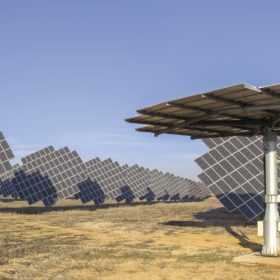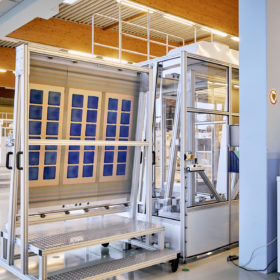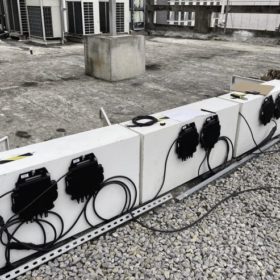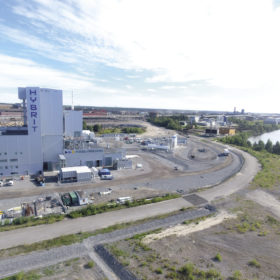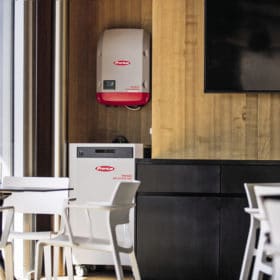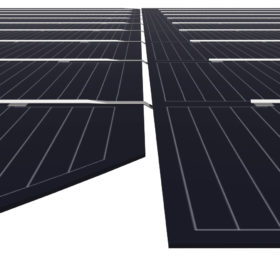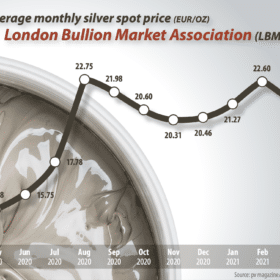Revamping complexity
Revamping, or plant modernization, is starting to come into vogue in some mature PV markets, and asset managers are beginning to rethink their operational strategies. Asier Ukar of PI Berlin details the strategic considerations, benefits, and risks of investing to extend the life and boost the returns of a solar asset.
A messy perovskite separation
There are increasing signs that a new era for PV production in Europe may be dawning. However, two pioneers of PV technology have decided, at this moment, to part ways. And while at present there are more questions than answers, technology and business strategy both appear to have played a role.
pv magazine test: Big modules, new beginnings
Earlier this year, the pv magazine test outdoor array in Xi’an, China underwent extensive modifications so it could accommodate the form factors and electrical characteristics of new modules based on larger wafer formats. George Touloupas, senior director of technology and quality at CEA, takes us through the new system and the reasons why the modifications were needed, as well as the role of newly installed microinverters supplied by AP systems.
Making cheaper H2
The hype surrounding green hydrogen is real, but does the cost-reduction outlook for its production technologies live up to it? Christian Roselund looks at the technology, transportation, application and enabling policies behind the promising green energy carrier.
pv magazine Annual Awards
It was a year unlike any other, but one constant remains – the innovation that continues to drive expansion of the solar and energy storage industries by opening up new applications, increasing functionality, and driving down costs. Across seven categories, pv magazine’s award winners for 2020 demonstrate high levels of technical expertise, creativity, mass production capabilities, and real market impact from PV and power electronics companies big and small. And the winners are…
Support schemes migrate from solar to storage
Behind-the-meter residential storage has been much talked about, but looking at application by market segment, very little capacity has actually been installed. IHS Markit says that an increasing number of ways to monetize distributed battery value are going to be introduced. Bundled together with the eagerness of grid operators to regulate grid exports, rapidly dropping feed-in tariff rates, and growing financial support for batteries, the time for wider storage adoption may be nigh.
Clever by half
Enhanced module appearance and power output can be achieved by a smart cell interconnection technique Longi is employing in its Hi-MO5 module series. But as with all new technologies, there are potential pitfalls.
New pathways in flexible thin film
Having picked up GBP 5.8 million ($8 million) in a series of investments, U.K.-based Power Roll is pushing ahead with pilot production of an innovative new thin film with which it can manufacture both solar modules and capacitors. In the future, the design could also bring the potential for solar generation and energy storage within a single lightweight device.
Pushing POE for longer module lifetimes
Polyolefin-based films are estimated to represent around 20% of the market for PV module encapsulation materials – a share that has been growing each year since 2017. The challenge of potential-induced degradation in bifacial modules has thus far driven this shift, but polyolefin has plenty more to offer in ensuring long-term performance for PV modules. pv magazine recently caught up with Yuyan Li, technical leader for PV applications at Dow Packaging & Specialty Plastics – the supplier of Engage PV POE resin – to discuss the latest developments in the PV encapsulants market.
All that glitters is HJT
The devil is in the details, as they say, and when it comes to the next generation of mass-produced, high-efficiency PV cells, silver costs may be devilishly hard to reduce. Making things worse, prices for the precious metal are now heading in the wrong direction.
